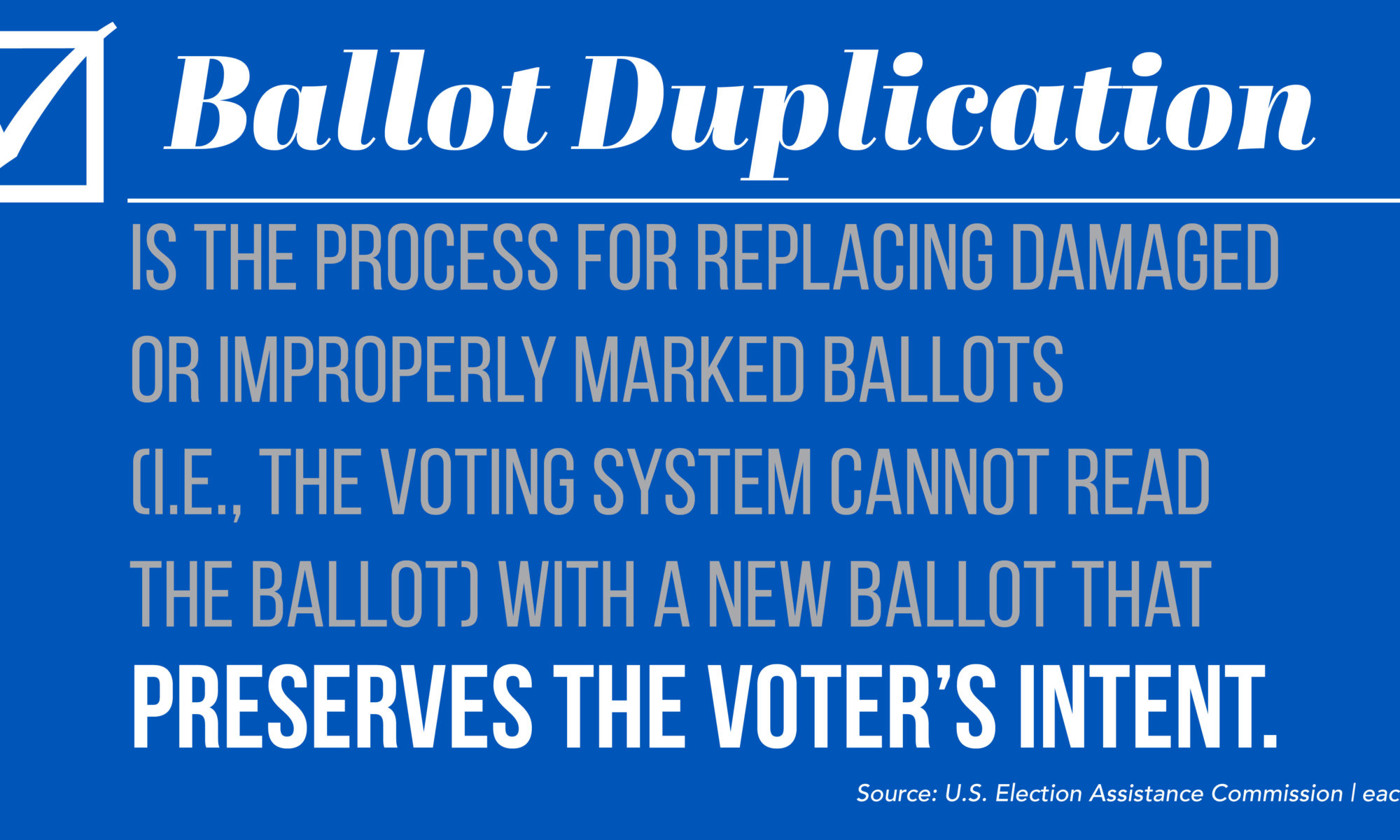Before the November 2020 election, the Overseas Voting Initiative anticipated an increase in absentee/by-mail ballots throughout the country, and the corresponding necessity for election jurisdictions to examine their ballot tabulation processes. In a series of articles, published between July and September the ballot duplication (or transcription) process in states was assessed.
All states allow poll watchers or observers access to some parts of the election process, and many states permit these individuals to be present during tabulation processes, including ballot duplication/transcription. In the midst of a global pandemic, states were faced with the question of how to allow the public or authorized observers access to tabulation processes while still maintaining social distancing and keeping election officials and observers safe. This September 23, 2020 article highlighted some of the ways states were planning on dealing with this issue, including streaming tabulation processes online and providing more space to process ballots. Now that a very challenging election is over, this article analyzes what worked and what could be improved in the realm of observing ballot tabulation processes.
As members of the Overseas Voting Initiative’s working group reflected on how they handled election observation of the ballot duplication process, several ideas emerged.
- For remote observation, in which the ballot duplication and other ballot tabulation processes are streamed online:
- Require those who want to observe remotely to provide their name, address, and other information and to accept conditions/guidelines for remote observation (like Orange County, CA did here).
- Track Internet Service Providers (ISPs) of those observing remotely so that if someone illegally takes a screen shot of a ballot or otherwise abuses their rights as an observer, they can be identified for possible investigation and penalty.
- Keep recordings of the process to combat misinformation. If there is a manipulated or misunderstood video circulating, use the original to combat the false narrative.
- Livestreams should have some context, whether it is a voice-over of what is happening as ballots are being processed, on-screen text explaining the process, or both. Livestreams could contain “pop-up” messages periodically explaining the process.
- For in-person observation of ballot duplication/transcription processes:
- Create a dedicated “ballot duplication” area with signs that describe the process and what is happening to give observers context for what they are seeing.
- Explain the entire process and lay out expectations for what observers will be seeing ahead of time.
- Provide observers with handouts that explain the process.
- Speak with observers frequently and do a “tip of the hour” to explain more about the process.
- Duplicate ballots on a ballot marking device, as it is easier to observe the action of ballot duplication on a screen than on paper. (Note that it is common practice to have two individuals completing ballot duplication – one is reading the voter’s selections and the other is transcribing those choices onto a “clean” ballot that can be read by scanners, whether this is done on paper or on a ballot marking device. More information on how this process works can be found in this pervious article).
Although 2020 was an extraordinary year requiring adaptations and quick thinking, many of the processes that election officials put in place for remote and in-person observation of tabulation processes will likely be useful in the future as well.


